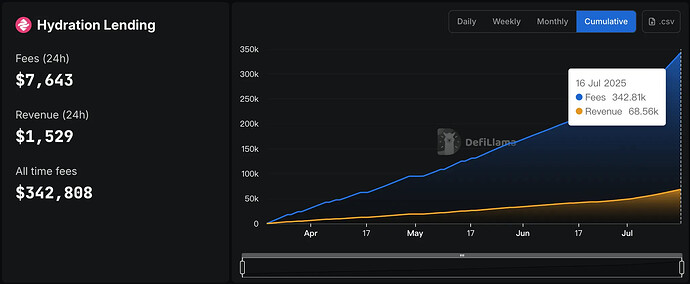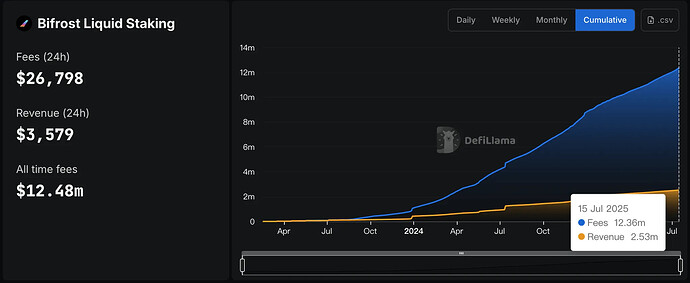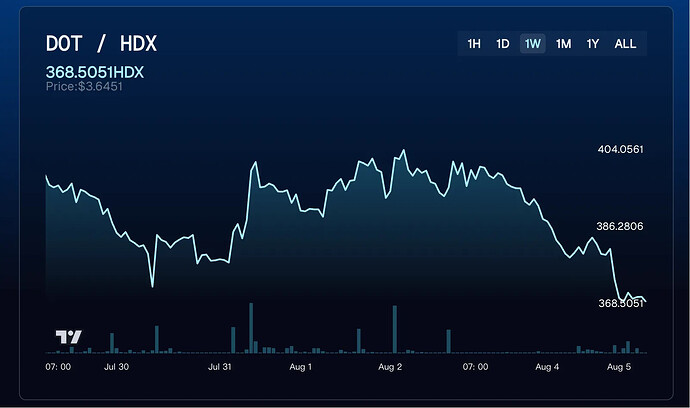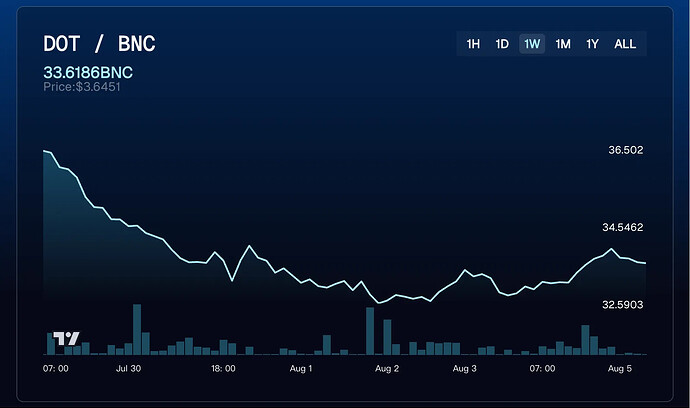I was planning on making a business plan for each of these Ideas and put together an ecosystem-centric vision & plan but I don’t have the bandwidth. So I’ll just dump the ideas here.
## **Internal Services**
* **Polkadot Storage** *(CLASSES: NVMe, HDD, Memory)*
* **CLASS: NVMe**
* **User purchases:** Object/file storage (GB‑month), retrieval bandwidth (GB), redundancy/pinning tier, IOPS/throughput class.
* **Provider offers:** Gen‑3 NVMe–backed Ceph BlueStore object store; PoSt/PDP optimized for Gen‑3 NVMe; availability/throughput SLAs; retention; metadata index mapping files → tenant “Cloud Store”.
* **Dependencies:** Monitoring Network (availability/durability attestations), DID (provider onboarding/compliance), PoSt/PDP modules, on‑chain payments.
* **Caveats/Notes:** Egress cost exposure; encryption/key custody; proof parameters/tuning **TBD**.
* **CLASS: HDD**
* **User purchases:** Cold object/file storage (GB‑month), retrieval bandwidth (GB), archival redundancy tier.
* **Provider offers:** HDD‑backed Ceph BlueStore capacity; PoSt/PDP attestations (cold tier); large‑capacity retention; same metadata index → “Cloud Store”.
* **Dependencies:** Monitoring Network, DID, PoSt/PDP tuned for HDD characteristics.
* **Caveats/Notes:** Very slow retrieval; lowest cost; retrieval batching; hot‑tier promotion policies **TBD**.
* **CLASS: Memory**
* **User purchases:** Ultra‑low‑latency key/object storage (ops/sec, GB‑RAM), TTL policies, optional write‑through to NVMe tier.
* **Provider offers:** Redis cluster as object store; high‑QPS/low‑latency SLAs; optional persistence/replication; metrics/export; metadata mapping to “Cloud Store”.
* **Dependencies:** Monitoring Network (latency/availability), DID, optional NVMe backfill/snapshot.
* **Caveats/Notes:** RAM cost premium; durability semantics (ephemeral vs AOF/RDB) explicit; eviction/TTL policy **TBD**.
* **Monitoring System & Network**
* **User purchases:** Active probes (TCP/HTTPS/WSS/ETH‑RPC Revive), alerting, attested uptime/latency/error reports, vantage diversity.
* **Provider offers:** Staked probe nodes, scheduled checks, signed attestations, SLA participation.
* **Dependencies:** DID (operators), Polkadot Storage (logs/metrics), secure time sync, quorum/aggregation pallet.
* **Caveats/Notes:** Oracle manipulation/false positives; slashing curves; regional vantage scarcity; probe‑data privacy.
* **Decentralized ID (DID)**
* **User purchases:** KYC/KYB verification, verifiable credential issuance, status/revocation checks.
* **Provider offers:** Attestations, local‑partner record‑keeping, verification APIs.
* **Dependencies:** Jurisdictional partners, Polkadot Storage (claims metadata), Monitoring (service uptime).
* **Caveats/Notes:** PII minimization/retention; cross‑border data rules; appeal/revocation flow; cost per verification.
---
## **IaaS Marketplace**
* **DNS Marketplace**
* **User purchases:** Domain registration/transfer, authoritative DNS hosting, record management, DNSSEC, GeoDNS/Anycast add‑ons, query capacity.
* **Provider offers:** Authoritative DNS service with defined QPS/SLA, zone propagation, DNSSEC signing, health reporting.
* **Dependencies:** Monitoring (uptime/QPS attestations), Polkadot Storage (zone files/backups via NVMe/HDD), DID (registrant/provider), ICANN/registrar integration via PCF entity/reseller **TBD**.
* **Caveats/Notes:** Per‑M query billing; DDoS shielding; proofs of hosting; TTL/cache behavior; ICANN policy compliance.
* **Virtual Machine (VM) Marketplace**
* **User purchases:** vCPU‑hours, RAM‑hours, block/local storage (GB‑month on NVMe/HDD), GPU time, public IPv4/IPv6, intra/inter‑DC bandwidth; optional snapshots/backups.
* **Provider offers:** VM images/instances, compute/network capacity, uptime/SLA, support, optional hardware attestation.
* **Dependencies:** Monitoring (availability/perf), DID (tenants/providers), Polkadot Storage (images/snapshots), bandwidth metering.
* **Caveats/Notes:** Noisy‑neighbor isolation; bandwidth fraud; IP reputation/abuse handling; hardware heterogeneity; side‑channel risk.
* **Kubernetes Marketplace**
* **User purchases:** Managed clusters/namespaces, node/pod hours, storage classes (NVMe/HDD), ingress/LB, autoscaling, optional GPU nodes.
* **Provider offers:** Control‑plane management, worker nodes, upgrades/patching, cluster SLOs, support/runbooks.
* **Dependencies:** Monitoring (cluster/node/pod), DID, Polkadot Storage (backups/artifacts), container registry integration.
* **Caveats/Notes:** Multi‑tenant security, version drift, workload isolation, egress cost from clusters.
* **Edge (CDN‑like) Marketplace**
* **User purchases:** Edge object placement, request serving (requests/month), egress GB, cache TTL/invalidation, optional edge functions/WAF, TLS termination.
* **Provider offers:** POP storage/bandwidth/compute, caching, TLS, request processing, logs/analytics.
* **Dependencies:** DNS (routing/GeoDNS), Monitoring (POP health/perf), Polkadot Storage (origin/backfill; hot objects optionally Memory tier), certificate management.
* **Caveats/Notes:** Egress cost volatility; content moderation/DMCA; cache‑purge costs; POP density; TLS key custody.
* **Carrier‑Grade Onion Routing Network**
* **User purchases:** Transit capacity (GB), optional QoS classes, circuit/hop selection, anycast ingress/egress.
* **Provider offers:** Forwarding nodes in private mesh, per‑hop processing/settlement, route announcements/peering, QoS enforcement.
* **Dependencies:** DID (operators/tenants), Monitoring (path performance/availability), IBP hardware footprint, PCF‑owned IPv4/IPv6 blocks, PKI/micropayments, private interconnects (VXC/MPLS/ETC).
* **Caveats/Notes:** Regulatory/exit‑node liability; lawful‑request handling; path‑length overhead vs latency; DoS/misrouting defenses; abuse mitigation.
* **Web Application Firewall (WAF) Marketplace**
* **User purchases:** Managed WAF service (L7 filtering, bot mitigation, rate limiting), optional caching/optimization, TLS termination, per‑request analytics.
* **Provider offers:** WAF clusters (reverse proxy), policy/rule management APIs, dedicated anycast/IP endpoints, logs.
* **Dependencies:** **DID (mandatory)** for buyers/providers (CSAM/abuse gating), DNS Marketplace (CNAME/Apex), Monitoring (request/latency/error probes), Polkadot Storage (logs/config), certificate management; optional Edge Marketplace interop.
* **Caveats/Notes:** False‑positive tuning; privacy/legal compliance; DDoS absorption disclosure; multi‑provider chaining; evidence preservation for abuse reports.
* **Mining Hashrate Marketplace**
* **User purchases:** Leased hashrate directed to buyer‑specified pool(s); time‑boxed or hashrate‑target contracts; managed proxying.
* **Provider offers:** Mining hardware capacity; configurable pool targets; telemetry; fallback to seller’s pool when idle.
* **Dependencies:** WAF Marketplace (proxy/reverse‑proxy routing to pools), Polkadot Storage (buyer/seller configs, pool creds), Monitoring (delivery verification, shares/accepted rate), on‑chain escrow/deposits.
* **Caveats/Notes:** Hashrate measurement/audit; pool misreporting risk; payout disputes; regional regulatory exposure; deposit drain/auto‑settlement logic.
* **Price Oracle Marketplace** *(moved from dAPP Services)*
* **User purchases:** Price feeds (pull/push) with freshness/SLA; aggregation policies; historical snapshots; retrieval from storage (pay‑per‑GB/object).
* **Provider offers:** Bonded oracle nodes sourcing declared exchanges/APIs; periodic writes to **Polkadot Storage (Memory)**; misbehavior slashing; governance approval of sources/policies.
* **Dependencies:** Polkadot Storage (Memory for hot writes; NVMe/HDD for history), DID (operators), Monitoring (outlier detection/availability), bonding/slashing pallet; consumer adapters (parachain runtime/EVM).
* **Caveats/Notes:** Buyers pay retrieval/storage; source/API outages; collusion/outliers; **bootstrap subsidy:** Treasury top‑up ≥ staking reward + **TBD**% until organic demand.
---
## **dAPP Services**
* **On‑Chain Casino (all games on‑chain)**
* **User purchases:** Wagers/game credits; table seats/tournaments; premium skins/namespaces.
* **Provider offers:** Fully on‑chain games (slots/dice/roulette/blackjack/poker); on‑chain RNG (VRF/commit‑reveal/threshold VRF); transparent house edge & payout tables; on‑chain bankroll/solvency proofs; UI gateways.
* **Dependencies:** Polkadot Storage (Memory for hot state; NVMe/HDD for history/logs), Monitoring (liveness/latency), DID (KYC/age geofencing per jurisdiction), IaaS (RPC/UI hosting), Price Oracle Marketplace (token valuations), settlement/escrow pallets.
* **Caveats/Notes:** Target \~500 ms tick (multi‑core scheduling); fairness/anti‑front‑running; responsible‑gaming controls; licensing/geofencing; bankroll risk rules.
* **Discord/Element/Matrix‑Style Chat**
* **User purchases:** Workspace/server creation, user seats/tiers (free + paid upgrades), storage/retention, voice/video minutes, API/integration quotas.
* **Provider offers:** Wallet‑auth chat; per‑server Redis DB isolation; Voice/Video SFU; scalable messaging/search; upgrade APIs for server owners/managers/members.
* **Dependencies:** Polkadot Storage (Memory hot state; NVMe/HDD persistence); IaaS (VM/Kubernetes); DID where required; components: Elixir, ScyllaDB, Elasticsearch, SFU.
* **Caveats/Notes:** Jurisdictional DID gating; free‑tier abuse controls; blockchain‑aware component patches; media/storage costs.
* **Email Service / Account Messaging**
* **User purchases:** Encrypted mailbox tied to wallet; message delivery; storage (GB); notification rules; spam‑deposit thresholds.
* **Provider offers:** HPKE+x25519 or (double) ratchet; inbox deposit gates; “reap” to seize sender’s storage deposit on rejection; delivery receipts; wallet‑address routing.
* **Dependencies:** Polkadot Storage (NVMe/HDD/Memory per sender choice); DID optional by jurisdiction; Monitoring; on‑chain escrow for deposits.
* **Caveats/Notes:** Metadata/privacy leakage; key rotation/recovery; UX for deposits/reaping; legal retention; anti‑spam economics.
* **Logging Provider / Log Stash**
* **User purchases:** Encrypted log ingestion endpoints, storage tier (NVMe or HDD), retention, viewing/streaming UI, optional search/indexing.
* **Provider offers:** Blockchain‑aware receiver validating address↔store; encrypted write; chunked/multipart tailing UI; optional Elasticsearch search with customer‑key decryption.
* **Dependencies:** Polkadot Storage (NVMe/HDD), Monitoring, IaaS (VM/Kubernetes); optional Elastic/Logstash.
* **Caveats/Notes:** Search vs encryption trade‑off; cost of hot retention; multi‑tenant isolation.
* **On‑Chain Password Manager**
* **User purchases:** Encrypted vault storage, client apps/extensions, team/shared vaults, 2FA secret management.
* **Provider offers:** Encrypted blob storage; client for download/decrypt/edit; versioning/audit trails; optional write‑through to NVMe tier.
* **Dependencies:** Polkadot Storage (NVMe/HDD; optional Memory cache), Monitoring; strong crypto libs; secure client distribution.
* **Caveats/Notes:** Key loss/recovery; side‑channel risks; offline access; org policy controls.
* **On‑Chain Reputation Registry**
* **User purchases:** Write/read of reputation artifacts; API access; dispute/arbitration flows.
* **Provider offers:** Primitives for: (1) Attestation, (2) Categorical feedback/association, (3) Direct feedback (rare/vote), (4) Start/End dispute, (5) Structured feedback, (6) Free‑text note, (7) Pairwise rank, (8) Proposal reviews/audits.
* **Dependencies:** DID (identity & issuer roles), Polkadot Storage (artifact blobs/indices), Monitoring; governance hooks for disputes.
* **Caveats/Notes:** Sybil/brigading resistance; appeal windows; schema/versioning.



